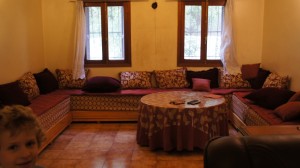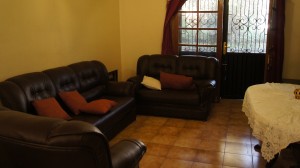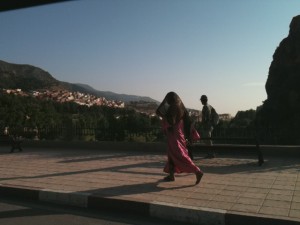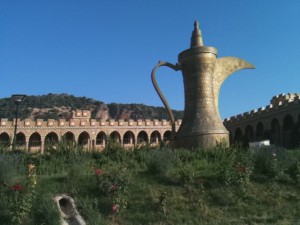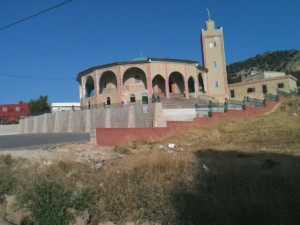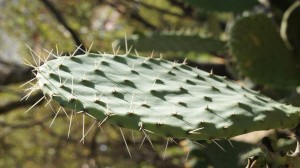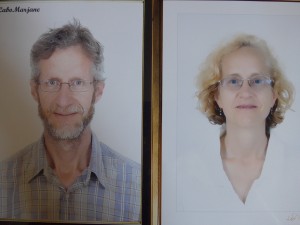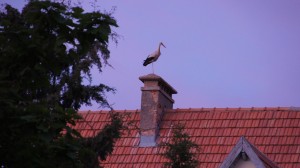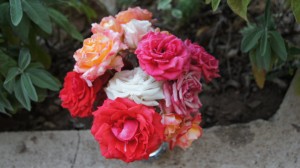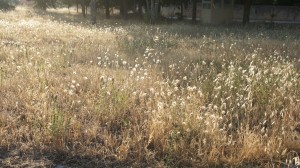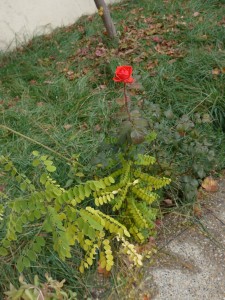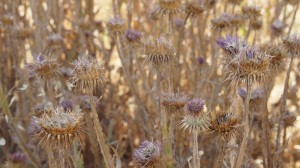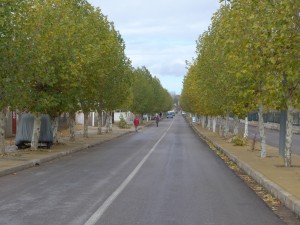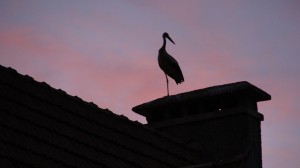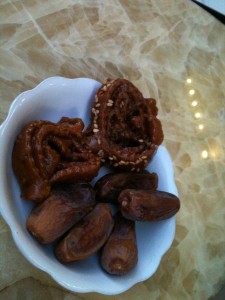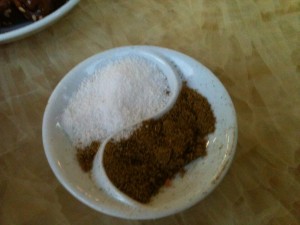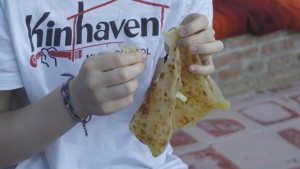The first step is learning to shop in Morocco.
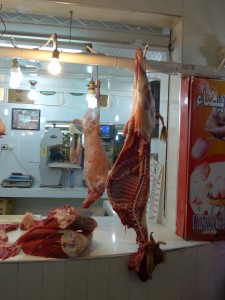
For a family of vegetarians, the meat side of the marché is a bit of a challenge. Oh, those little lamb and kid heads dangling at the bottom of the hanging meat! And the delicacy of the sheep heads: brains, tongues… I prefer not to go there, even mentally.
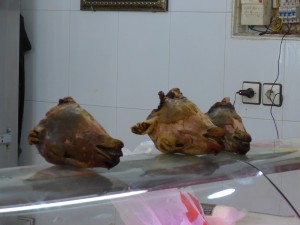
But the fresh fruit and veg: let’s go there!
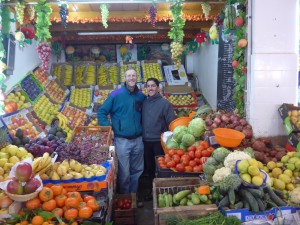
And the souk is far more extravagant:
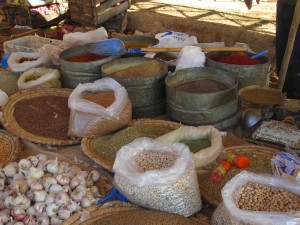
Spices, anyone?
Here’s a water-seller who wanders the souk in conventional water-selling garb:
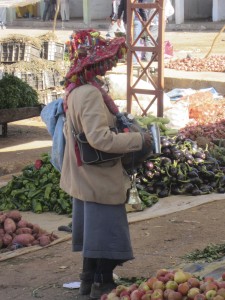
James is always impressed at the range of the souk: he finds specialized computer cables for a dollar. A good bicycle runs about $100. On the other hand, Zoë and I bought watches at the souk on our first visit for about three dollars each, but both are now defunct.
Still, the heart of the souk is to be found in the fruit and vegetable offerings. Here’s what we bought for somewhere between two and three dollars:
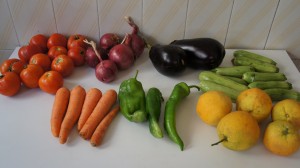
Jeremy has decided that we need to consume fresh-squeezed orange juice every day. He’s willing to be the juicer, since the electric juicer that came with the house is broken. We’ve started to buy a couple of kilos of oranges every time we go to the souk, and: yum!
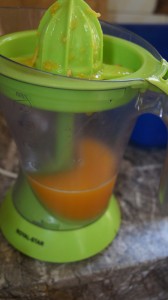
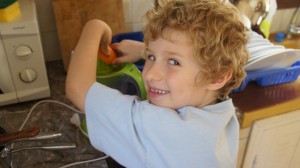
Meanwhile, to make bread and pizza, we have to come to grips with clumpy “live yeast:”
And we were a little shocked to discover that Moroccan tea is boiled on the stove in the silver teapot! and that it takes six of these sugar cubes (sugar rectangles?) for each pot of tea:
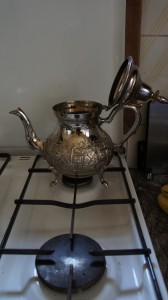
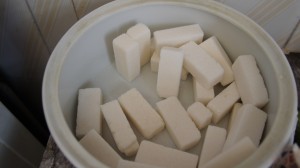
Diabetes, anyone? No wonder the children love it. And I thought it was the fresh mint leaves…

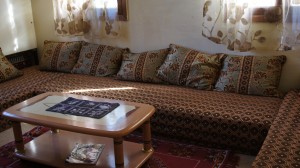
 Omar’s house is unusual in several respects: it separates public areas (ground floor) and private sleeping areas (upper floor) instead of mixing them together; it has a well-equipped kitchen, including an oven (!) and a microwave;
Omar’s house is unusual in several respects: it separates public areas (ground floor) and private sleeping areas (upper floor) instead of mixing them together; it has a well-equipped kitchen, including an oven (!) and a microwave; 
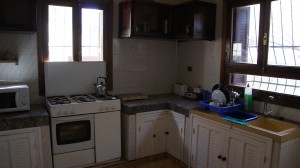 and it’s nicely furnished in a mixture of Moroccan and French styles.
and it’s nicely furnished in a mixture of Moroccan and French styles.